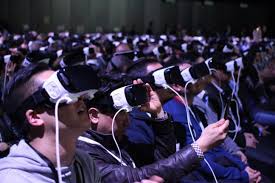A report from analyst firm IDC has found that shipments of augmented reality and virtual reality headsets were down 30.5 per cent year over year, totalling 1.2 million units in the first quarter of 2018.

Its Worldwide Quarterly Augmented and Virtual Reality Headset Tracker produced the statistics for the consumer VR market, but also predicts fortunes to improve.
The reasons behind the slump, the report says, is that many headsets were bundled with smart phones in a bid to prime the market, but as this push now appears to have ceased, it’s this that is seen to be affecting the figures rather than lack of demand.
This comes on the back of today’s news that Microsoft has decided to pull out of plans to support VR on its popular Xbox console.
Additionally, as VR/AR has matured, commercial, out-of-home propositions have found content easier to create and perfect. IDC said it “believes the commercial market to be equally important and predicts it will grow from 24 per cent of VR headset shipments in 2018 to 44.6 per cent by 2022.”
The firm also predicted that the rollout of Microsoft's Windows Mixed Reality platform “should see strong opportunities in the commercial market as brands such as HP, Dell, and Lenovo bring their years of experience catering to enterprise buyers to the market.”
The wider picture, IDC foresees, is that numbers of shipped VR headsets will “grow from 8.1 million in 2018 to 39.2 million by the end of 2022, representing a five-year compound annual growth rate of 48.1 per cent.”

